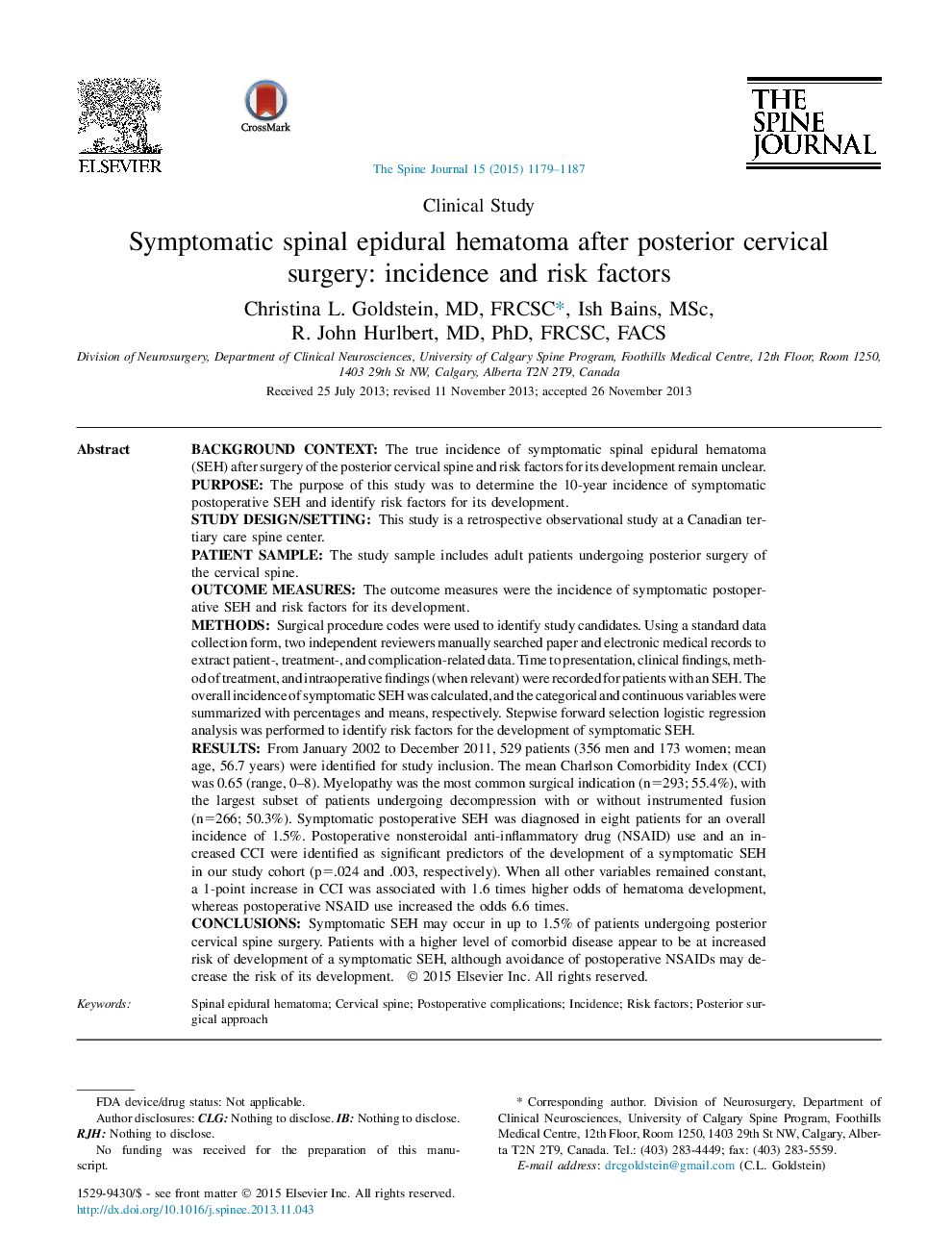| کد مقاله | کد نشریه | سال انتشار | مقاله انگلیسی | نسخه تمام متن |
|---|---|---|---|---|
| 6211874 | 1268561 | 2015 | 9 صفحه PDF | دانلود رایگان |
Background contextThe true incidence of symptomatic spinal epidural hematoma (SEH) after surgery of the posterior cervical spine and risk factors for its development remain unclear.PurposeThe purpose of this study was to determine the 10-year incidence of symptomatic postoperative SEH and identify risk factors for its development.Study design/settingThis study is a retrospective observational study at a Canadian tertiary care spine center.Patient sampleThe study sample includes adult patients undergoing posterior surgery of the cervical spine.Outcome measuresThe outcome measures were the incidence of symptomatic postoperative SEH and risk factors for its development.MethodsSurgical procedure codes were used to identify study candidates. Using a standard data collection form, two independent reviewers manually searched paper and electronic medical records to extract patient-, treatment-, and complication-related data. Time to presentation, clinical findings, method of treatment, and intraoperative findings (when relevant) were recorded for patients with an SEH. The overall incidence of symptomatic SEH was calculated, and the categorical and continuous variables were summarized with percentages and means, respectively. Stepwise forward selection logistic regression analysis was performed to identify risk factors for the development of symptomatic SEH.ResultsFrom January 2002 to December 2011, 529 patients (356 men and 173 women; mean age, 56.7 years) were identified for study inclusion. The mean Charlson Comorbidity Index (CCI) was 0.65 (range, 0-8). Myelopathy was the most common surgical indication (n=293; 55.4%), with the largest subset of patients undergoing decompression with or without instrumented fusion (n=266; 50.3%). Symptomatic postoperative SEH was diagnosed in eight patients for an overall incidence of 1.5%. Postoperative nonsteroidal anti-inflammatory drug (NSAID) use and an increased CCI were identified as significant predictors of the development of a symptomatic SEH in our study cohort (p=.024 and .003, respectively). When all other variables remained constant, a 1-point increase in CCI was associated with 1.6 times higher odds of hematoma development, whereas postoperative NSAID use increased the odds 6.6 times.ConclusionsSymptomatic SEH may occur in up to 1.5% of patients undergoing posterior cervical spine surgery. Patients with a higher level of comorbid disease appear to be at increased risk of development of a symptomatic SEH, although avoidance of postoperative NSAIDs may decrease the risk of its development.
Journal: The Spine Journal - Volume 15, Issue 6, 1 June 2015, Pages 1179-1187
